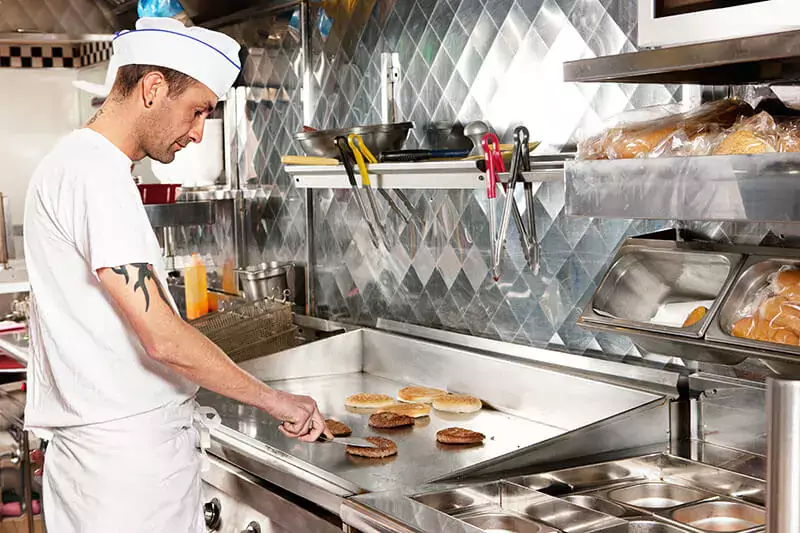“Technology visionary” may not be the first thing that comes to mind when you think of the U.S. Food and Drug Administration (FDA), which is more known for publishing guidance in its Food Code for state and local governments to adopt, or more recently, its mandate that chain food service operators to use nutrition labeling for menu items. But with the reveal of its new food safety blueprint, the agency is looking to change that.
The FDA is now taking a more proactive stance on the how of food safety – the processes, technology, and tools that the foodservice industry should adopt to modernize its approach to keeping consumers (and employees) safe. While many restaurants, convenience, grocery, and other foodservice operators have already begun digitizing various aspects of their operations toward this end, the blueprint will help operators prioritize where to put even more energy and focus in terms of better-enabling employees to practice proper food safety, automating different aspects of operations, digital tools for audits and oversight of stores, and much more.
| Free Download: The Restaurant Ops Execution Playbook
The blueprint, which can be downloaded from the FDA website here, outlines areas of focus for traceability, outbreak prevention and response, retail modernization, and food safety culture; but for the frontlines of foodservice operations that serve food to customers – the store managers and GMs and their staff, the district managers, VPs of ops and other operations leaders, we’ve highlighted some of the key takeaways that relate to the execution aspect of food safety in stores every day, to help you envision and prioritize what changes you might bring to your own foodservice operation.
“Inspection, Training, and Compliance Tools”
The need for remote/mobile solutions for inspection, training, and compliance is highlighted as its own section in the blueprint and is even more important in the age of COVID-19, which has required many operators at some point to ground their field and management teams or at least limit their in-person visits to stores. This has exacerbated the “visibility” issue for operators, who now know even less about what is actually happening in stores every day with respect to food safety protocols, brand standards, and more.
Here are a few excerpts from the “Inspection, Training, and Compliance Tools” of the blueprint:
-
“Encourage, support, and evaluate the use of sensor technology by industry to strengthen monitoring of critical and preventive control points.”
-
“Expand the availability of industry and regulatory training to include, where appropriate, computer- based and distance learning models.”
-
“Modernize the agency’s inspectional and reporting process by leveraging mobile inspection technology and digital reporting tools.”
The FDA has made it clear that authorities and industry alike need to digitize how audits and inspections are completed, which will enable more of the oversight work to be monitored at a “distance” i.e. not an in-person visit, and have data be more accessible for reporting, analysis, and insights.
“Ensure Safety of Food Produced or Delivered Using New Business Models”
Beyond digitizing certain workflows, this section urges the industry to use automation where possible, such as automated temperature monitoring or other solutions to replace processes that are often done manually (and thus more error-prone).
From the blueprint:
-
“Encourage the use of technology that automatically monitors product risk factors associated with new business models, such as time, temperature, tamper resistance, and traceability information.”
-
“Encourage and explore use of new digital tools and incentives that prompt desired behaviors, such as handwashing and manual temperature monitoring (i.e., managerial controls).”
From the FDAs perspective, this will better ensure that food has been held at the right temperature and is thus more likely to be safe to consume, and help employees practice food safety procedures (like handwashing) correctly and regularly.
But for operators, this would also bring several other important benefits, such as:
-
Cost/inventory savings: saving a freezer full of costly inventory because you received an alert about high equipment temperatures and were able to fix it
-
Record keeping: having automatically recorded temperatures going back weeks or months can save you during inspections, litigation and elsewhere
-
Employee productivity: help employees prioritize their time throughout the day to complete the most important tasks first, or automate certain work which saves them time which can be re-focused on other tasks
Building a culture of food safety
An organization’s food safety is more than just the work that is done to keep food safe; it’s about education at all levels of the company about food safety and understanding the importance of it, and communicating (internally and externally) a common approach and how that translates into daily work.
In its “Food Safety Culture” section of the blueprint, the FDA offers a long list of how it will aim to build a stronger culture of food safety throughout the industry and with consumers, and offers some “aspirational” scenarios that we should strive for, such as: “knowing that the workers in your favorite restaurant use safe-food handling practices, not because they’re required to but because the workplace culture has made it second nature for them.”
Much of the food safety work done in restaurants, convenience stores, grocery stores, etc. is simply not visible to the consumers they serve, and only noticeable when that work is not done. But as we’ve highlighted above, the adoption of new processes and technology to improve food safety will ultimately make everyone safer and improve consumers’ trust in your company and the greater industry.
Subscribe to our blog
You are now subscribed!
